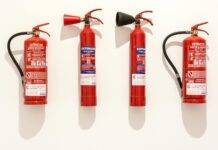
Safety Supervisor: Safety Quiz for Safety Supervisor with Answers (MCQs Test)
Introduction to Safety Quiz for Safety Supervisors
Safety is paramount in any workplace, and safety supervisors play a crucial role in ensuring a secure working environment. One effective tool for enhancing safety awareness and knowledge retention among safety supervisors is the safety quiz. In this article, we delve into the significance of safety quizzes and provide a comprehensive guide on designing, implementing, and optimizing them for maximum effectiveness.
Purpose of Safety Quizzes
Safety quizzes serve multiple purposes in the workplace environment. Firstly, they help ensure that safety supervisors retain essential information regarding safety protocols and regulations. Additionally, quizzes allow supervisors to identify areas where further training may be required, thereby enhancing overall safety standards. Moreover, regular quizzes serve as a means of reinforcing safety practices and keeping safety at the forefront of everyone’s minds.
Designing an Effective Safety Quiz
Designing an effective safety quiz begins with understanding the target audience – in this case, safety supervisors. It’s essential to consider their level of expertise and the specific safety concerns relevant to their roles. The quiz format can vary, but multiple-choice questions (MCQs) are often preferred for their simplicity and ease of grading. Topics covered in the quiz should align with the most critical safety aspects of the workplace, such as OSHA regulations, emergency response procedures, and hazard identification.
Sample Questions for Safety Supervisors
What is the primary purpose of a Job Safety Analysis (JSA)?
A) To identify potential hazards associated with a job
B) To determine the salary of employees
C) To increase productivity
D) To evaluate employee performance Answer:
A) To identify potential hazards associated with a jobWhich of the following is NOT a type of Personal Protective Equipment (PPE)?
A) Hard hat
B) Safety glasses
C) Steel-toed boots
D) Hammer
Answer: D) HammerWhat does the acronym "OSHA" stand for?
A) Occupational Safety and Health Administration
B) Occupational Standards and Hazard Analysis
C) Occupational Safety and Hazard Administration
D) Organization for Safety and Health Assessments
Answer: A) Occupational Safety and Health AdministrationWhich of the following is an example of a physical hazard in the workplace?
A) Noise pollution
B) Unsafe lifting techniques
C) Improper chemical storage
D) Slippery floor
Answer: D) Slippery floorWhat is the purpose of a Safety Data Sheet (SDS)?
A) To provide information about company policies
B) To list all employees' personal information
C) To provide detailed information about hazardous chemicals
D) To track employee attendance
Answer: C) To provide detailed information about hazardous chemicalsWhich of the following is a common cause of workplace accidents?
A) Proper training
B) Regular safety inspections
C) Poor housekeeping
D) Effective communication
Answer: C) Poor housekeepingWhat is the best course of action if you discover a fire in the workplace?
A) Attempt to extinguish it yourself
B) Ignore it and continue working
C) Evacuate the area and notify others
D) Close the windows and doors to contain it
Answer: C) Evacuate the area and notify othersWhat does the term "Ergonomics" refer to in the context of workplace safety?
A) The study of workplace efficiency
B) The study of human factors in the workplace
C) The study of workplace lighting
D) The study of workplace temperatures
Answer: B) The study of human factors in the workplaceWhat is the purpose of a Safety Audit?
A) To identify potential hazards in the workplace
B) To evaluate employee performance
C) To increase production output
D) To determine employee salaries
Answer: A) To identify potential hazards in the workplaceWhat is the recommended procedure for lifting heavy objects?
A) Bend at the waist and lift with your back
B) Keep your back straight and lift with your legs
C) Twist your body while lifting
D) Lift objects with one hand to maintain balance
Answer: B) Keep your back straight and lift with your legsWhich of the following is NOT a typical component of a Safety Management System (SMS)?
A) Risk assessment
B) Incident investigation
C) Budget planning
D) Safety training
Answer: C) Budget planningWhat does the acronym "MSDS" stand for?
A) Material Safety Data Sheet
B) Management System for Safety Documentation
C) Manual for Safety Data Standards
D) Mandatory Safety Documentation System
Answer: A) Material Safety Data SheetWhat is the purpose of a Confined Space Entry Permit?
A) To restrict access to confined spaces
B) To document and control entry into confined spaces
C) To encourage entry into confined spaces
D) To penalize employees for entering confined spaces
Answer: B) To document and control entry into confined spacesWhat is the primary goal of a Safety Committee?
A) To increase workplace accidents
B) To improve workplace safety
C) To ignore safety regulations
D) To reduce employee morale
Answer: B) To improve workplace safetyWhich of the following is an example of a biological hazard in the workplace?
A) Exposure to loud noise
B) Slippery floor
C) Bloodborne pathogens
D) Improper lifting techniques
Answer: C) Bloodborne pathogensWhat is the purpose of a Safety Tag?
A) To indicate that a machine is safe to operate
B) To indicate that a machine is unsafe to operate
C) To indicate that maintenance is required
D) To indicate that a machine is for sale
Answer: B) To indicate that a machine is unsafe to operateWhat is the recommended procedure for reporting workplace hazards?
A) Keep it to yourself to avoid trouble
B) Report it to your supervisor or safety officer immediately
C) Ignore it and hope it goes away
D) Share it on social media
Answer: B) Report it to your supervisor or safety officer immediatelyWhat does the term "LOTO" stand for in the context of safety?
A) Lock Out Tag Off
B) Lock Out Tag On
C) Look Out Turn Off
D) Lock Out Tag Out
Answer: D) Lock Out Tag OutWhich of the following is a common symptom of heat stress?
A) Shivering
B) Sweating excessively
C) Pale skin
D) Hypothermia
Answer: B) Sweating excessivelyWhat is the primary purpose of conducting safety inspections?
A) To increase workplace hazards
B) To identify and correct unsafe conditions
C) To ignore safety protocols
D) To decrease employee morale
Answer: B) To identify and correct unsafe conditionsBenefits of Regular Safety Quizzes
Regular safety quizzes offer numerous benefits to both individuals and organizations. They help increase safety awareness among employees, leading to a reduction in workplace accidents and injuries. Moreover, by fostering a culture of safety, quizzes contribute to a positive work environment where everyone feels valued and protected.
Implementing Safety Quizzes in the Workplace
Implementing safety quizzes requires careful planning and execution. Supervisors should schedule quizzes regularly, ensuring they align with training schedules and operational needs. Providing timely feedback to participants is essential for reinforcing learning and addressing any misconceptions. Furthermore, supervisors should encourage active participation to maximize the effectiveness of the quizzes.
Tracking and Monitoring Progress
Tracking and monitoring quiz results allow supervisors to gauge the effectiveness of their safety training initiatives. By analyzing quiz data, supervisors can identify areas where additional training may be needed and track improvements over time. This data-driven approach enables organizations to continuously refine their safety programs for optimal results.
Incorporating Feedback for Continuous Improvement
Gathering feedback from quiz participants is critical for continuously improving the quiz content and format. Supervisors should solicit input from employees to identify any areas of confusion or dissatisfaction. By incorporating feedback into future quizzes, supervisors can ensure that their training efforts remain relevant and impactful.
Challenges and Solutions
While safety quizzes offer many benefits, they may also face challenges in implementation. Overcoming resistance to quizzes, addressing time constraints, and ensuring quiz relevance are common issues that supervisors may encounter. By addressing these challenges proactively and seeking innovative solutions, supervisors can maximize the effectiveness of their safety quizzes.
Best Practices for Safety Supervisors
To ensure the success of safety quizzes, supervisors should follow best practices such as setting clear expectations, making quizzes interactive and engaging, and recognizing achievements. Clear communication regarding quiz objectives and expectations helps participants understand the importance of the quizzes and encourages active participation.
Legal Considerations
When designing safety quizzes, supervisors must ensure compliance with relevant regulations and laws. This includes protecting employee privacy and ensuring that quiz content aligns with industry standards and best practices. By staying informed about legal requirements, supervisors can mitigate potential risks and ensure the legality of their safety quizzes.
Conclusion
Safety quizzes play a vital role in enhancing safety awareness and knowledge retention among safety supervisors. By designing, implementing, and optimizing quizzes effectively, organizations can foster a culture of safety and reduce workplace accidents. By following best practices, incorporating feedback, and staying abreast of legal considerations and future trends, supervisors can maximize the effectiveness of their safety quizzes and ensure a safer working environment for all.
Safety Engineer: Safety Quiz for Safety Engineer with Answers (MCQs Test)
Safety Officer: Safety Quiz for Safety Officer with Answers (MCQs Test)
Unique FAQs
- How often should safety quizzes be conducted in the workplace?
- The frequency of safety quizzes can vary depending on factors such as industry regulations, organizational policies, and the nature of the workplace. However, conducting quizzes regularly, such as monthly or quarterly, is recommended to ensure ongoing reinforcement of safety protocols.
- What is the role of feedback in improving safety quizzes?
- Feedback from quiz participants is invaluable for identifying areas of improvement and ensuring that quiz content remains relevant and effective. By incorporating feedback into future quizzes, supervisors can tailor their training efforts to meet the specific needs of their employees.
- Are safety quizzes mandatory for all employees?
- While safety quizzes may be mandatory in some workplaces, the decision to make them compulsory ultimately depends on organizational policies and regulatory requirements. However, encouraging voluntary participation can also yield positive results by fostering a culture of safety and accountability.

























Very good information indeed,
very good site and used full